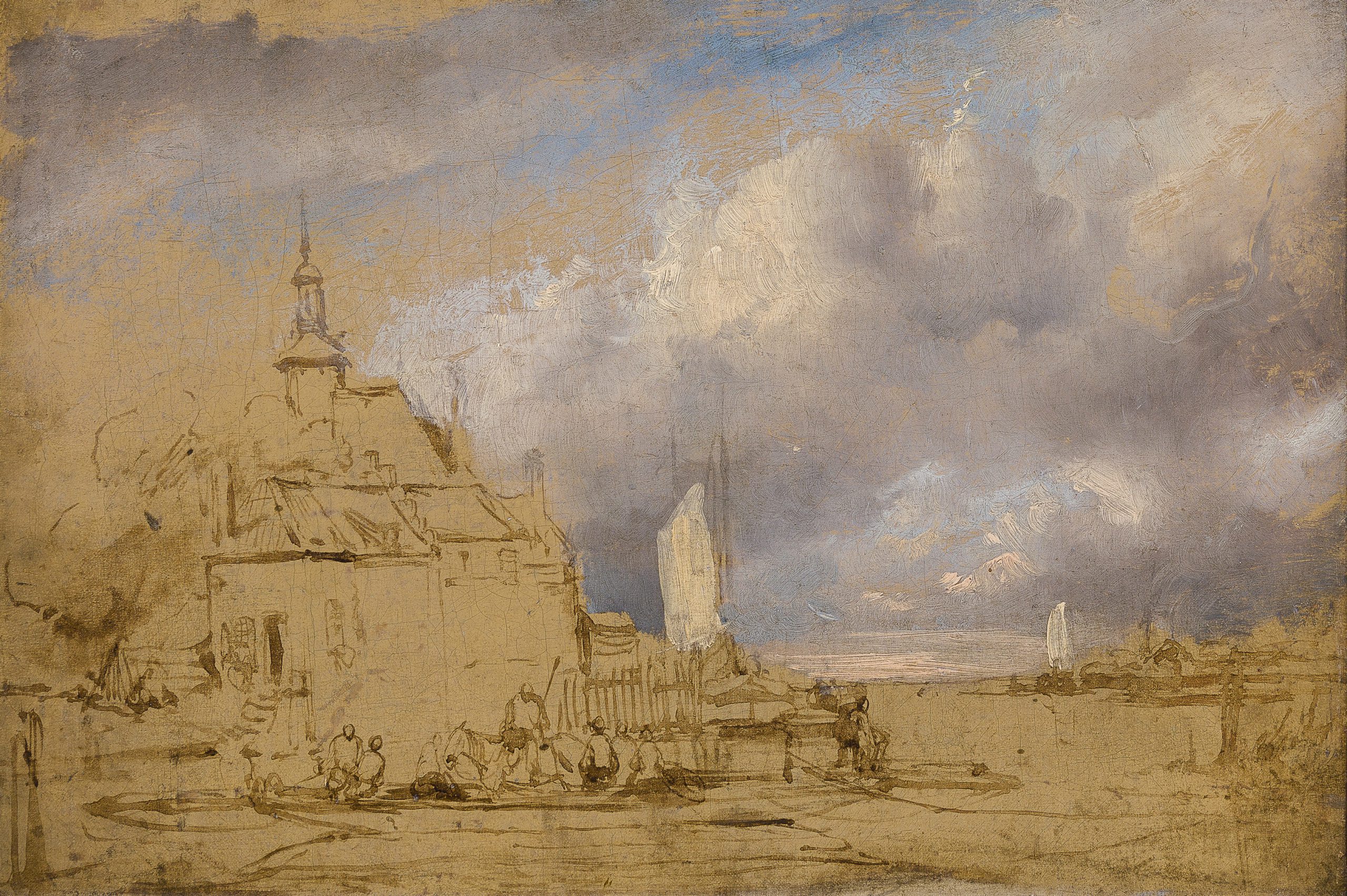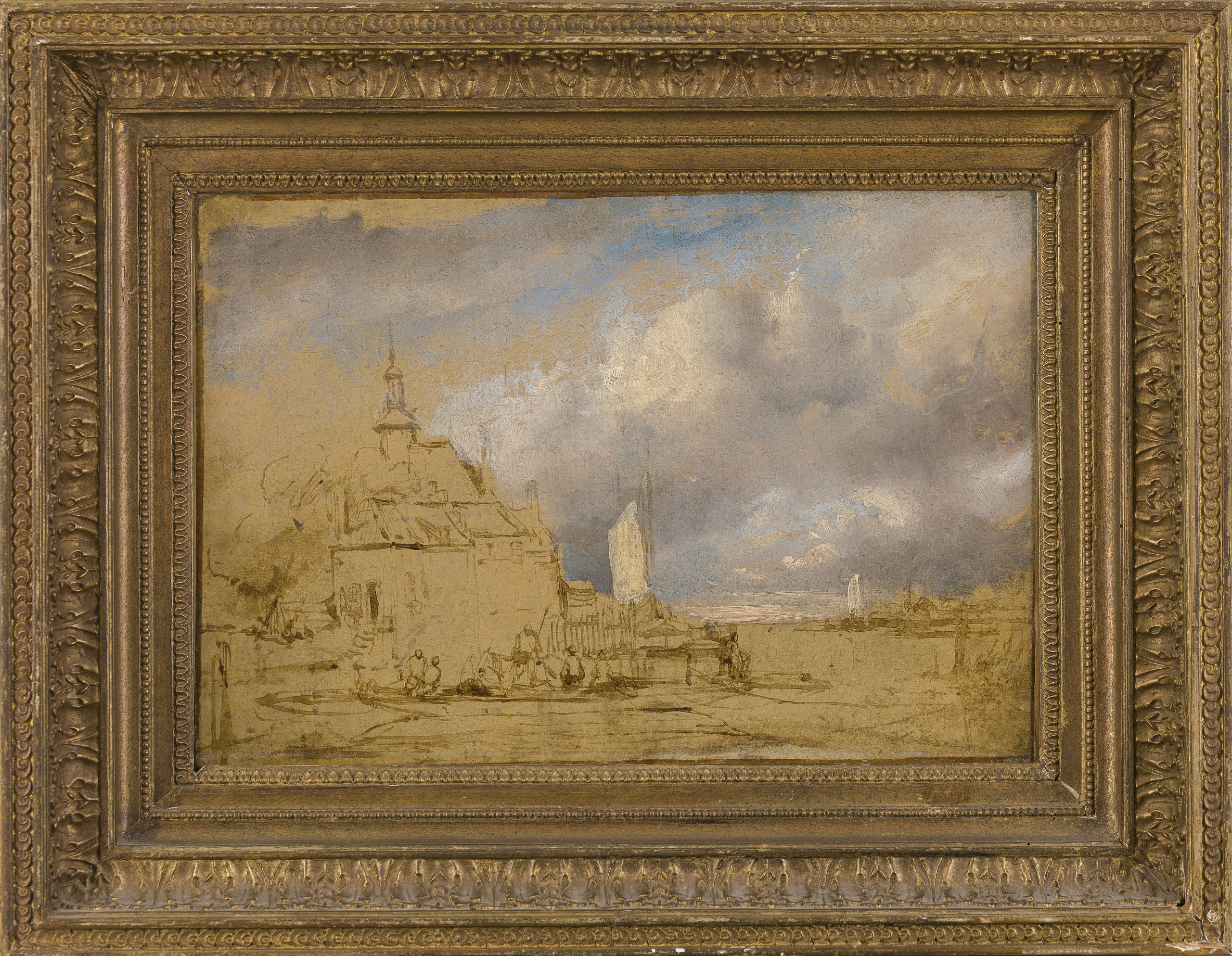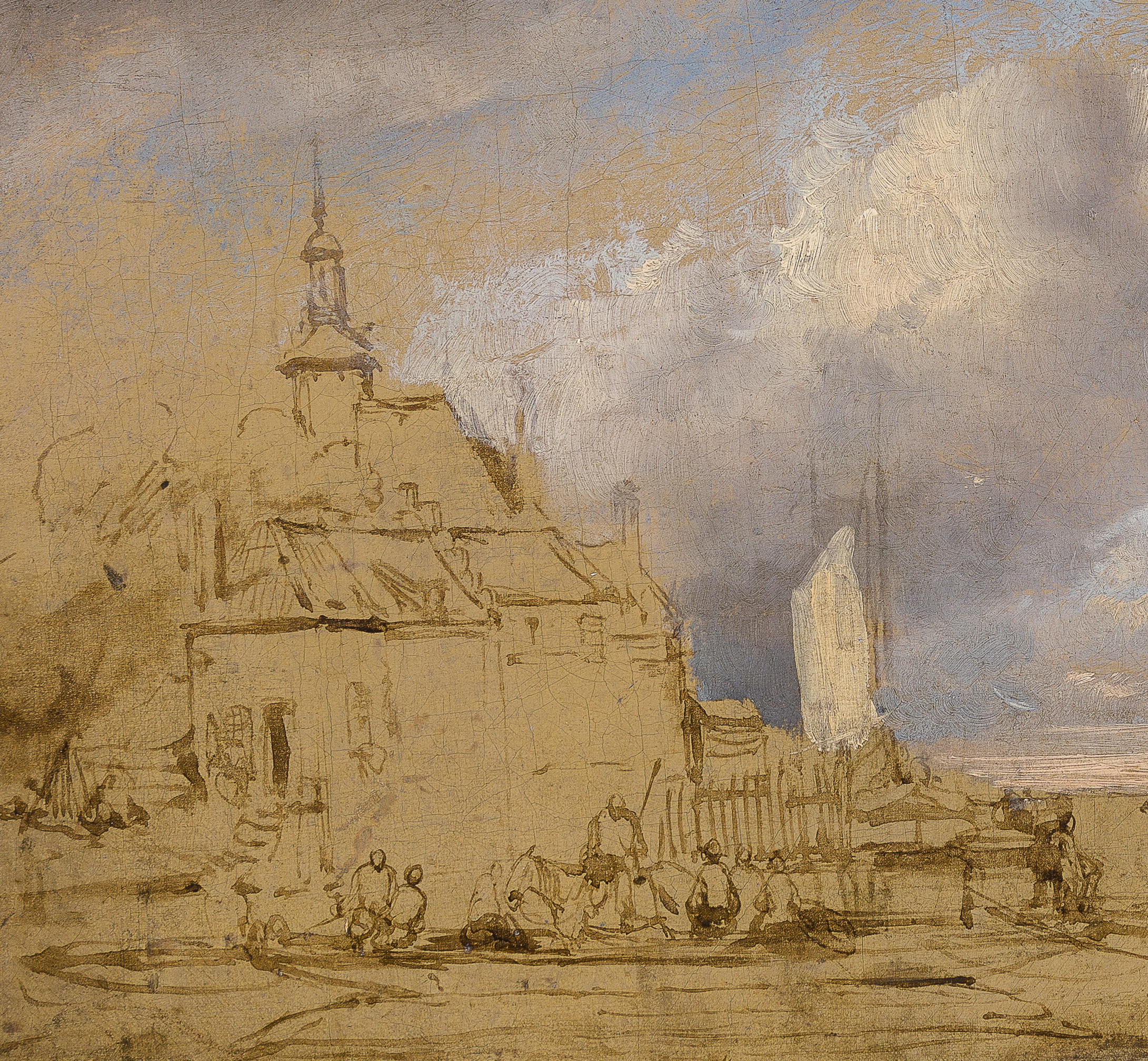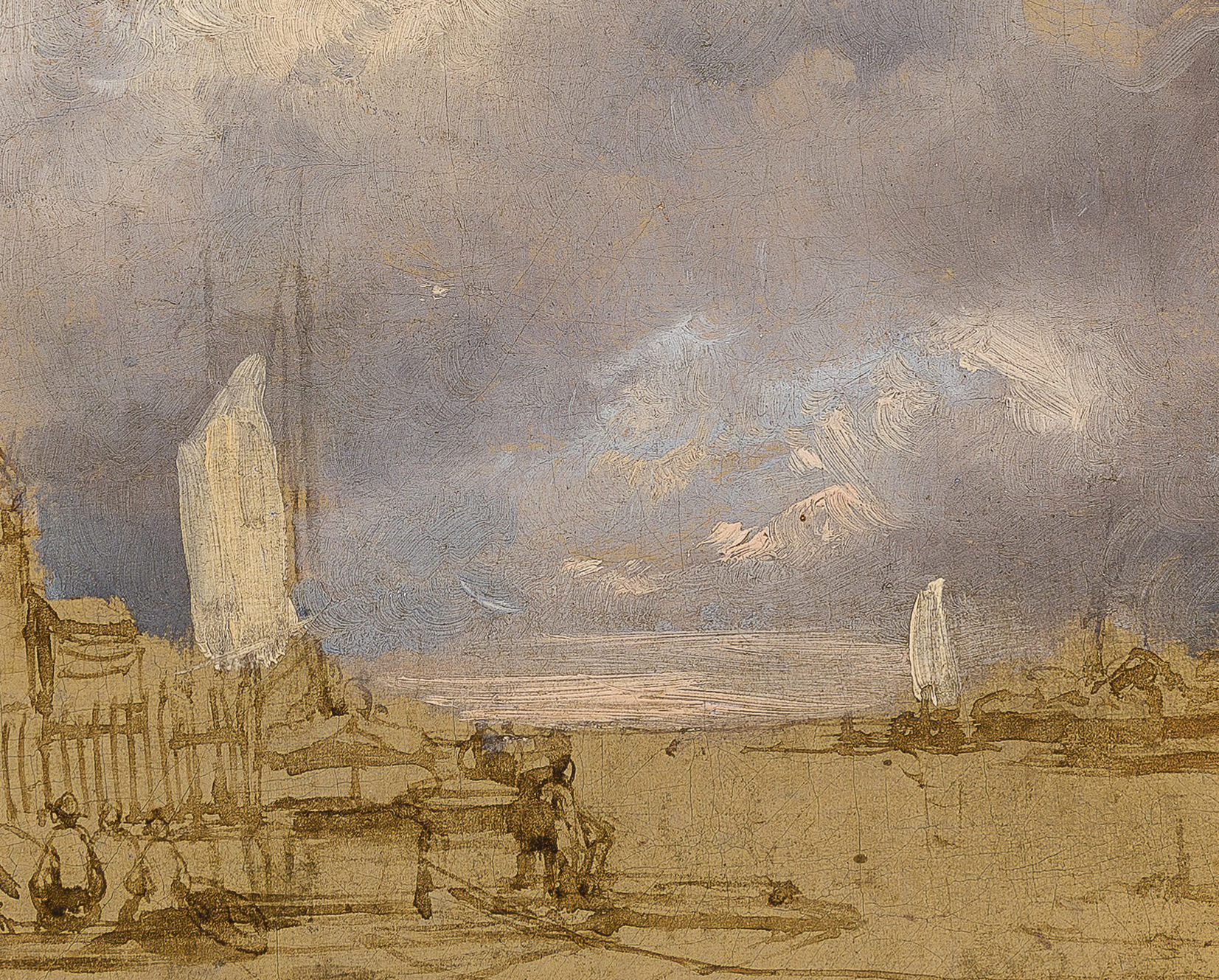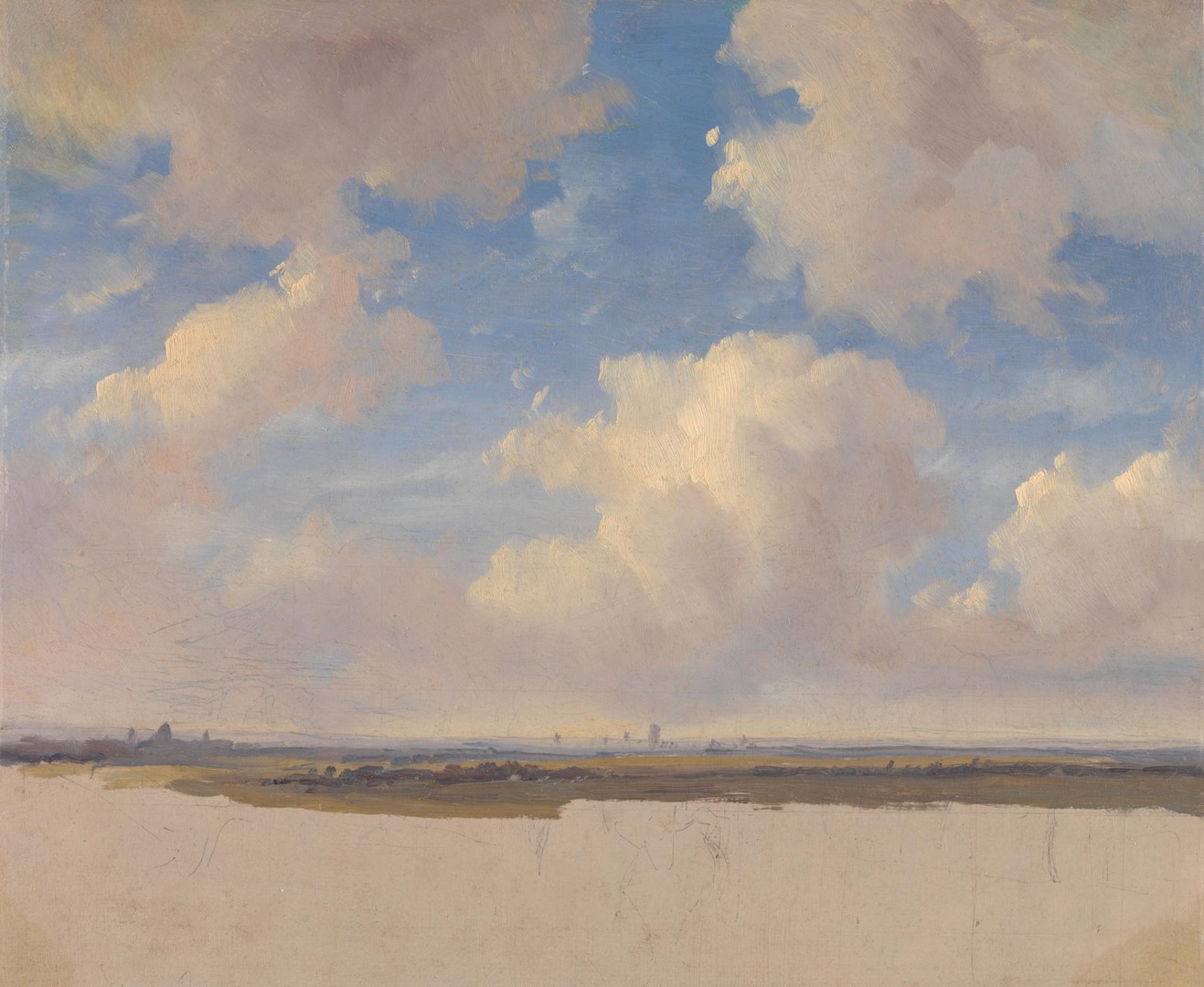Attributed to ANDREAS SCHELFHOUT (The Hague 1787 – 1870 The Hague)
Attributed to Andreas Schelfhout (The Hague 1787 – 1870 The Hague)
The Ooster Oude Hoofdpoort, Rotterdam, with Boats in the Foreground
Oil on canvas, 27 x 40 cm (10.6 x 15.7 inch); contained in an early 19th-century giltwood frame
Provenance
~ Private collection, United Kingdom
~ Private collection, The Netherlands
***
The present sketch is a rare example of a Dutch plein air oil sketch of the first half of the nineteenth century. Artists had started making free and improvisational oil sketches since the beginning of the seventeenth century, but the practice only became widespread during the later eighteenth and early nineteenth centuries, especially among the large international community of artists working in Italy. Such spontaneous works were rarely intended for sale or exhibition, but were tests of skill in the observation of natural phenomena, ways of training the eye and hand to capture fleeting effects of light and atmosphere. Often painted on paper or small wooden panels, the completed sketches were piled in the corner of the studio, sometimes consulted as the artist composed a ‘finished’ landscape. When the contents of artists' studios were dispersed following their deaths, such sketches were generally little valued – the art-historical renaissance of the oil sketch dates from the last decades of the twentieth century.1
Plein air oil sketches of Dutch subjects are particularly rare. Although there is little material for comparison, the free handling of the sky is similar to works by Andreas Schelfhout, who is a major representative of the Dutch Romantic school of painters, best known for his panoramic and winter landscapes.2 Born in The Hague in 1787, Schelfhout visited Paris in 1833, where he came into contact with the French Romantic landscape tradition, prompting a freer style. The French visit also encouraged Schelfhout to paint directly from nature, 'en plein air'. Schelfhout taught at the academy in The Hague, where his pupils included the young Johan Barthold Jongkind (1819-1891).
To date, little research has been carried out into plein air sketches by Schelfhout, although it is known he produced such studies: a study of a Landscape with Cumulous Clouds by Schelfhout, in which he paid particular attention to the cloud formations, was part of the Gere Collection and is now in the National Gallery, London (fig.).3 This sketch was frormerly attributed to Gilles-François-Joseph Closson (1798–1842), until its composition was linked to Schelfhout’s Landscape near Haarlem of 1839, now in the Victoria & Albert Museum, London. As pointed out by Xavier Bray in the 2003 National Gallery catalogue, the re-attribution to Schelfhout sheds light on the artist’s working methods.4 The swift and assuredly confident application of paint and the concentration on the sky and cloud formations of our sketch and that in the National Gallery are comparable.
Schelfhout often painted panoramic views of Haarlem seen from the dunes, but the present work records the Ooster Oude Hoofdpoort at Rotterdam. This city gate was constructed in 1597-98 in the Dutch Renaissance style, marking the East entrance of the ‘Oude Haven’ (Old Harbour) of Rotterdam. The gate was torn down in 1856, which provides a terminus ante quem for the dating of this charming and rare study. The gate is not known to have been depicted in other works by Schelfhout, but it does appear, from a different angle, in a work by his pupil, Adrianus Vrolijk (1834–1862).5
1. For the subject, see: Christopher Riopelle and Xavier Bray, A Brush with Nature, London 2003
2. For the artist, see: Willem Laanstra, Andreas Schelfhout, Amsterdam 1995, C.C.G. Quarles van Ufford, Andreas Schelfhout: landschapschilder in Den Haag, Leiden 2009 and F. van der Velden, Andreas Schelfhout (1787-1870) en zijn tekeningen in Teylers Museum, Haarlem 1994.
3. Oil on paper laid onto canvas, 245 x 293 mm; Riopelle and Bray, op. cit., pp. 58-59, cat. no. 15.
4. Riopelle and Bray, op. cit. p. 58.
5. Oil on canvas, 39.5 x 52 cm, formerly with Polak Gallery, The Hague.
